I’ve had the Olympus OM-D EM-5 for about two weeks now. In that period of time, I’ve had the opportunity to try it out while on assignment as well as for some task-specific images, to a large degree of success. I’ve also put it through some really gruelling exposure torture tests, and it has actually performed pretty admirably. Needless to say, I’m really happy with the camera, and thankfully so too since it’s not what one would call a cheap camera. In fact, right now, it’s the most expensive micro four thirds camera money can buy and the question really is whether it’s worth it. Here’s some ten images that I made in the last two weeks.
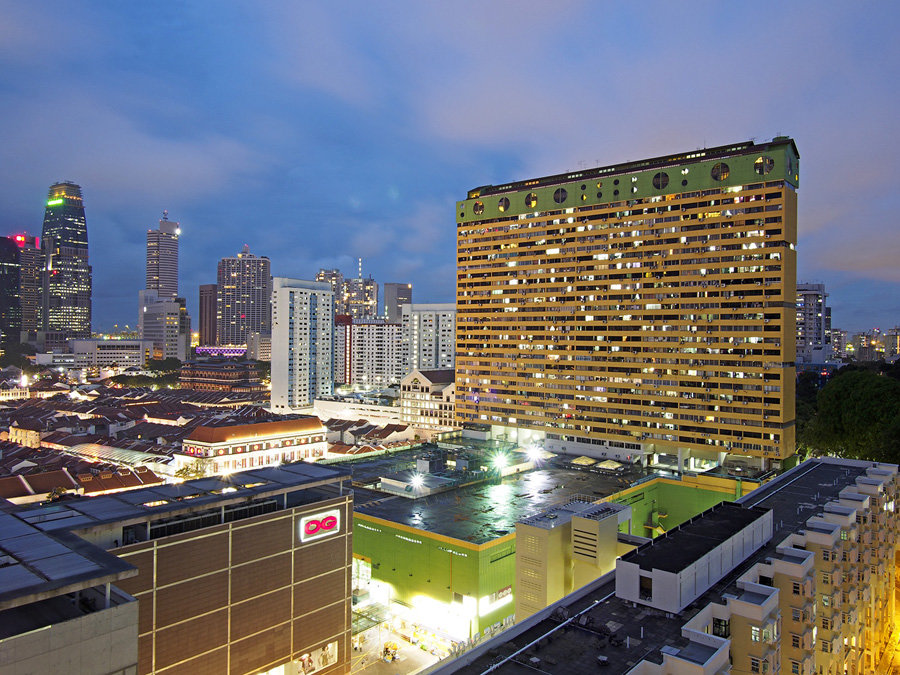
© Copyright Darren Soh.
One of my reasons for buying the OM-D EM-5 was to pair it with the superb Panasonic Lumix 7-14mm f4.0 ASPH zoom lens. I do alot of landscape and architectural photography; and the 7-14 is on my m43 cameras more than 50% of the time so I was eager to try the EM-5 with the lens. This image was made on the EM-5 with a moderately long exposure of 20 secs and the results were more than satisfactory. Many cameras with smaller sensors produce mushy results at long-ish exposures; I’m happy to say that the EM-5 isn’t one of those.
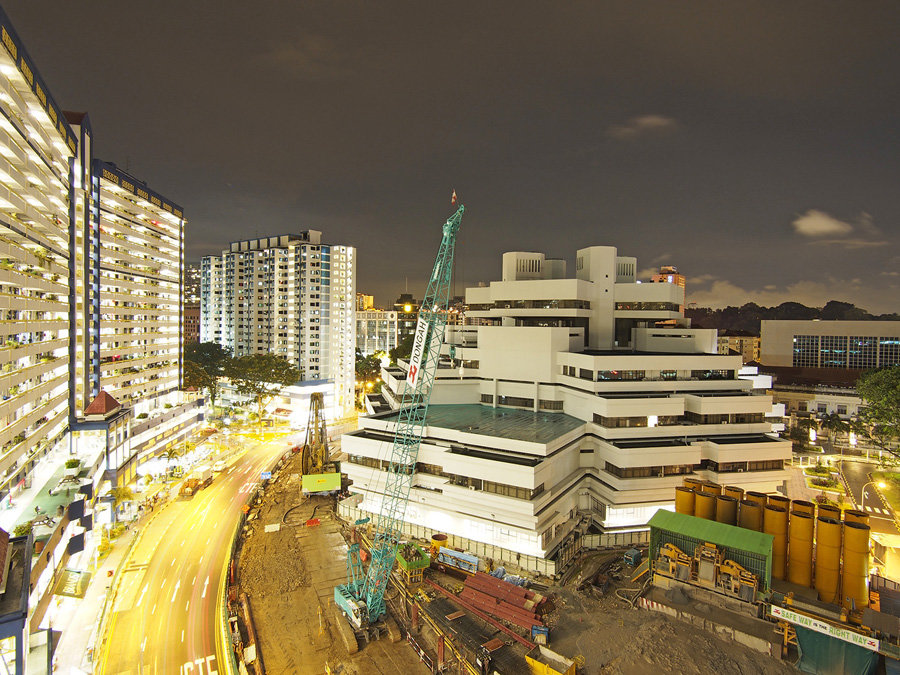
© Copyright Darren Soh.
The relatively small size of the OM-D EM-5 coupled with the 7-14mm allowed me to balance my tripod in places where I’d ordinarily not try with a big DSLR setup, such as a ledge, where this image was made from. Also the camera did remarkably well in keeping the highlights from blowing out while obtaining detail in the shadow areas. Impressive.
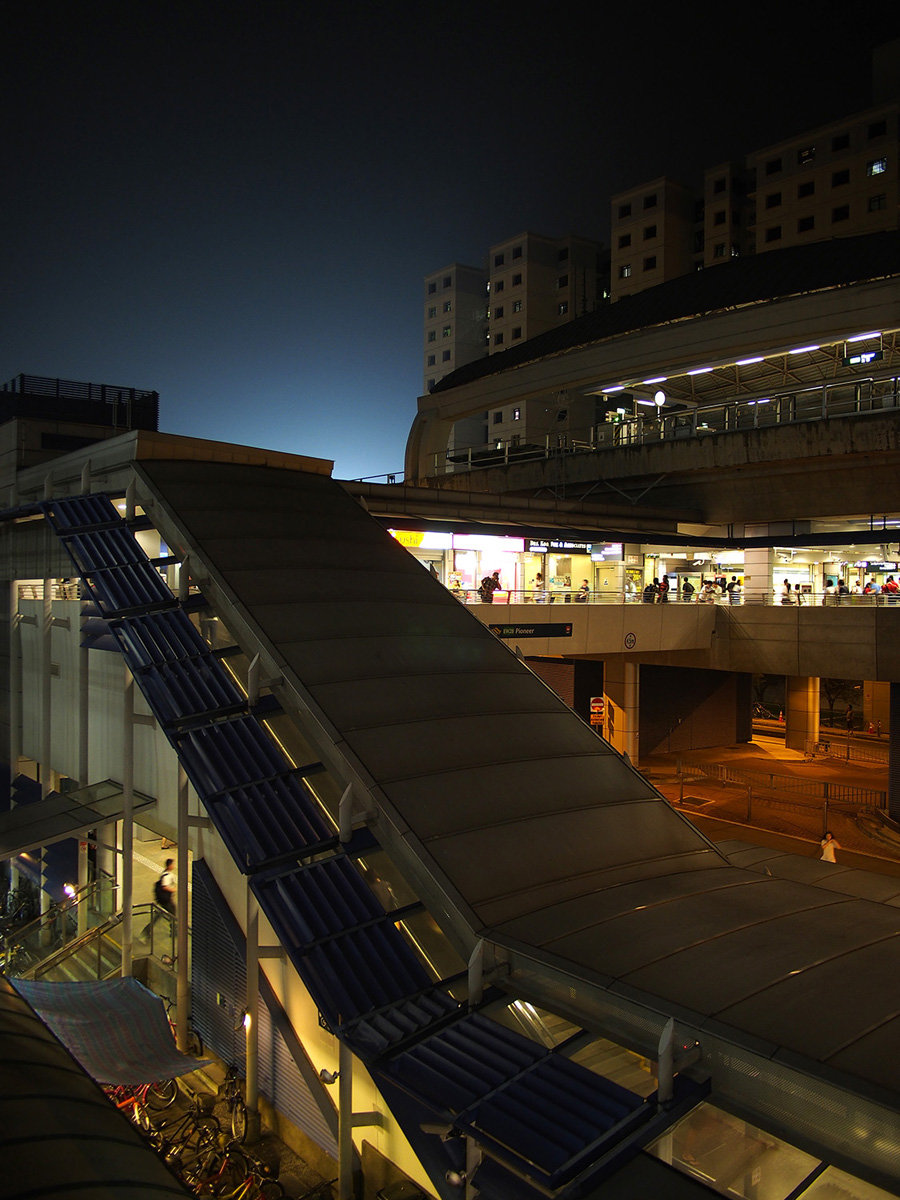
© Copyright Darren Soh.
One of the other m43 lenses I use fairly often is the Lumix 14mm 2.5 because it’s really compact and small and allows me to shoot handheld at really low shutter speeds yet still get a sharp image. This was a scene I witnessed while coming down in Multi-storey Carpark near Pioneer MRT Station and I liked how the stadium lights in the background had added a glow to the sky. This was made at 1/10 of a sec. Perfectly sharp (thanks also in no small part to the in-body Image Stabilization of the EM-5).
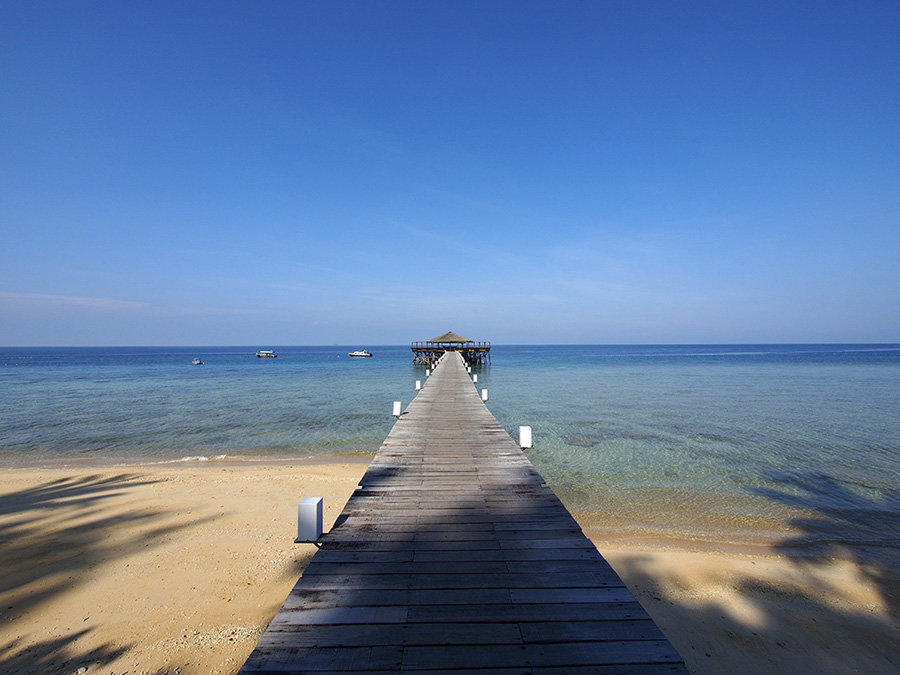
© Copyright Darren Soh.
Camera reviewers often talk about this thing called the “Olympus Colours” and of course what they really mean is that the JPEG rendering engine in Olympus cameras give really pleasing hues and colours. I was in Pulau Tioman on assignment last week and had the fortune of great weather over four days to use the EM-5. Here’s an example of those “Olympus Colours”. This was made on the 7-14 at the wide end (7mm) with no colour adjustments whatsoever applied in post.

© Copyright Darren Soh.
Here’s an image (again made on the 7-14) shot into the sun (albeit hidden behind clouds) that showed the dynamic range of the EM-5’s sensor. I’m not into calculating EV stops so I won’t be able to tell you how many stops of difference there are between the shadow areas near the middle of the frame and the clouds above the mountain, but hey, I think the camera did a fantastic job in keeping everything in check here.
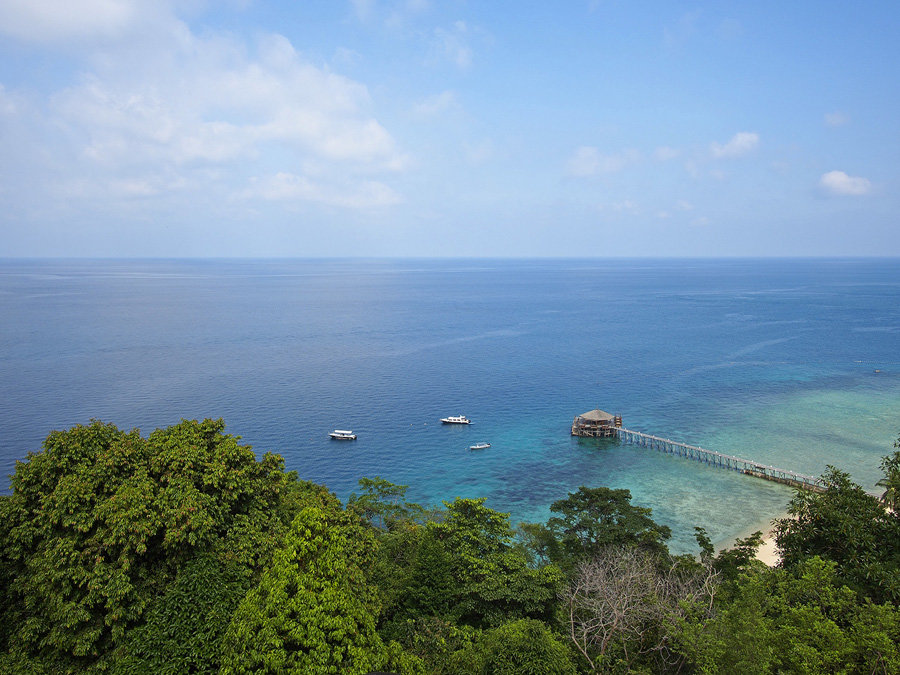
© Copyright Darren Soh.
Turning around, (literally in terms of shooting position from that last image) I made this other image. Remarkably pleasing hues of blues and greens, nothing more I could’ve asked for.
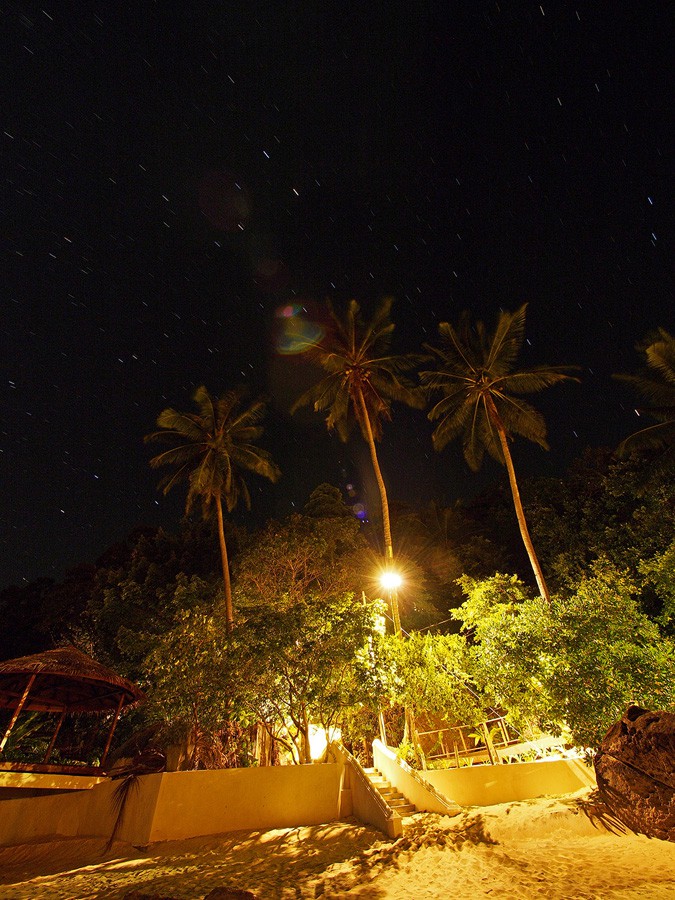
© Copyright Darren Soh.
One of the ground-breaking features of the OM-D EM-5 is this thing called the Live Time Long Exposure setting where you get to view in realtime your accumulative long exposure as it happens. The idea is that you can then gauge from the LCD screen when the image has received enough exposure and then you close the shutter. This proved to be really useful in preventing your highlights from blowing out in a scene like this. This was a three minute exposure, and I probably could’ve sacrificed a little detail in the foreground to get more detail in the skies but I cut the exposure when the area around the stairs started to blow out.

© Copyright Darren Soh.
Another really pleasing thing about the EM-5’s sensor and Olympus’ image processing is the amazing amount of gradation possible in a shot like this. And oh, did I mention those “Olympus Colours”?
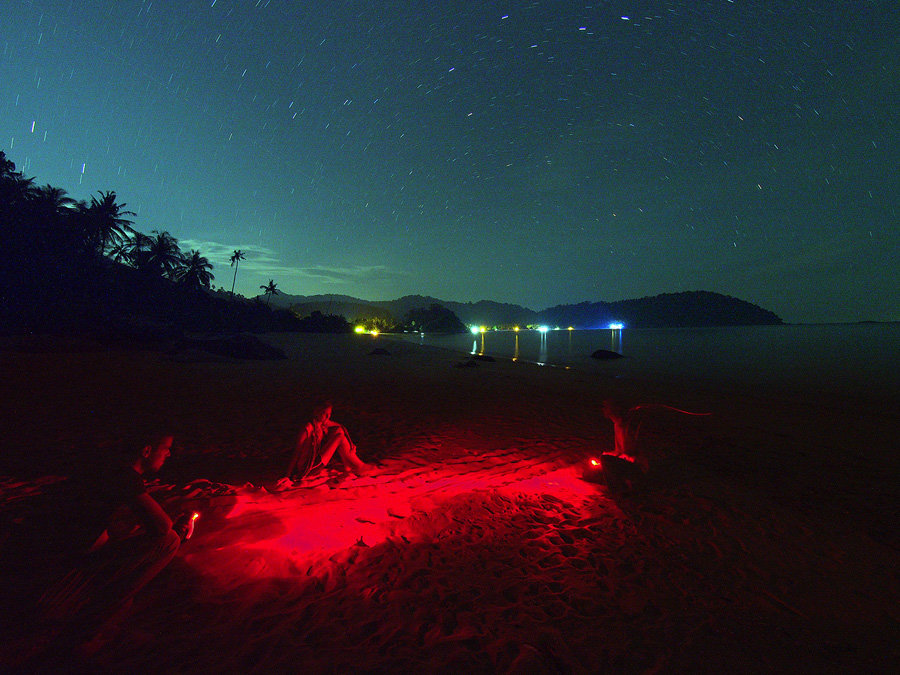
© Copyright Darren Soh.
This is an image of volunteers from the Juara Turtle Project, an NGO based in Tioman. Here, the volunteers are using red lights to locate and identify turtle tracks so that the eggs laid by these sea turtles can be protected and properly incubated. This image proved to be the ultimate torture test in terms of long exposure, dynamic range and even focusing. I had to manual focus my 7-14 using a LED flashlight on the camera’s OLED screen in magnification mode, then use Live Time Exposure to expose for the foreground. After about 30 seconds, I asked the volunteers to switch off their lights so as to prevent the foreground from blowing out and then I exposed the surrounding landscape for an additional four minutes in order to get the ambient lighting as well as the stars. At these long exposures, alot of detail ends up getting lost to long exposure noise reduction but the results were still very very good.

© Copyright Darren Soh.
A parting shot of Tioman just as we were leaving, made on the Lumix 14mm. I’m just so happy with how the camera manages to capture a scene so close to how the human eyes perceives it, and often with little need for exposure compensation too.
I think I’m just going to confirm what many reviews out there have already said – that Olympus has got a winner on their hands with the OM-D EM-5. Like all cameras, it’s not perfect, but for what I need it to do it comes pretty close. Is it worth the money? If you have an existing ecosystem of m43 lenses, I’d say yes. For now, the better lenses in the system are those made by Panasonic, which are mostly what I own, but we hope that Olympus will be able to up the ante just like they did with their cameras. As Darth Vader puts it, “Impressive. Most impressive.”
Text & Photographs: Darren Soh | www.darrensoh.com
Share

Comments 17
Beautiful photos. I’ve got the same combination OMD with 7-14mm. The only problem I run into is I get quite a bit of purple chromatic aberrations. I get it both indoors and outdoors. I keep wondering if there’s something wrong with my lens sample. If you get this purple CA as well how do you deal with it. I try to use clone tool or repair tool in Aperture to edit. That works most of the time but was wondering if there’s a better solution. This link has some example. Thanks.
http://www.flickr.com/photos/7558422@N04/sets/72157634032807073/
Impressive. Most impressive. http://t.co/RQtU4UuQ
Olympus OM-D First Look: Landscapes & Long Exposures http://t.co/qkpozTi1 #fb #in #sc
@betabit Another review.. this time about long exposure: http://t.co/msvdTv7C
Pingback: El cuerpo imperfecto...
Olympus OM-D: Landscapes & Long Exposures. http://t.co/Y5ZYNDzu
Looks good. RT @InvisPhotogAsia: Olympus OM-D First Look: Landscapes & Long Exposures http://t.co/4DXn5iSG
RT @sayamotret: @dhaturembulan RT“@InvisPhotogAsia: Olympus OM-D: Landscapes & Long Exposures. http://t.co/5YdFR9kf”
@dhaturembulan RT“@InvisPhotogAsia: Olympus OM-D: Landscapes & Long Exposures. http://t.co/mw03JaUM”
Olympus OM-D: Landscapes & Long Exposures. http://t.co/Y5ZYNDzu
Olympus OM-D: Landscapes & Long Exposures. http://t.co/Y5ZYNDzu
Olympus OM-D: Landscapes & Long Exposures. http://t.co/Y5ZYNDzu
Wow, nice pics. I want to buy this camera.
Nice photos here, from initial reviews. Nice..hope its the right decision to get it. #idphotography http://t.co/hWT2GN6b
Olympus OM-D First Look: Landscapes & Long Exposures | Invisible Ph t grapher Asia http://t.co/dRXf604O (via Instapaper)
Thanks so much for posting this information!
I’ve been considering buying either a Pentax K-01 or the Olympus OM-D for some time now. I’ve been leaning more towards the K-01, maionly because of the cost, but the info you posted here is making me really consider the OM-D.
-N
http://finderview.com
http://portfolio.finderview.com
Olympus OM-D E-M5 First Look: Landscapes & Long Exposures http://t.co/z0PBxYS5